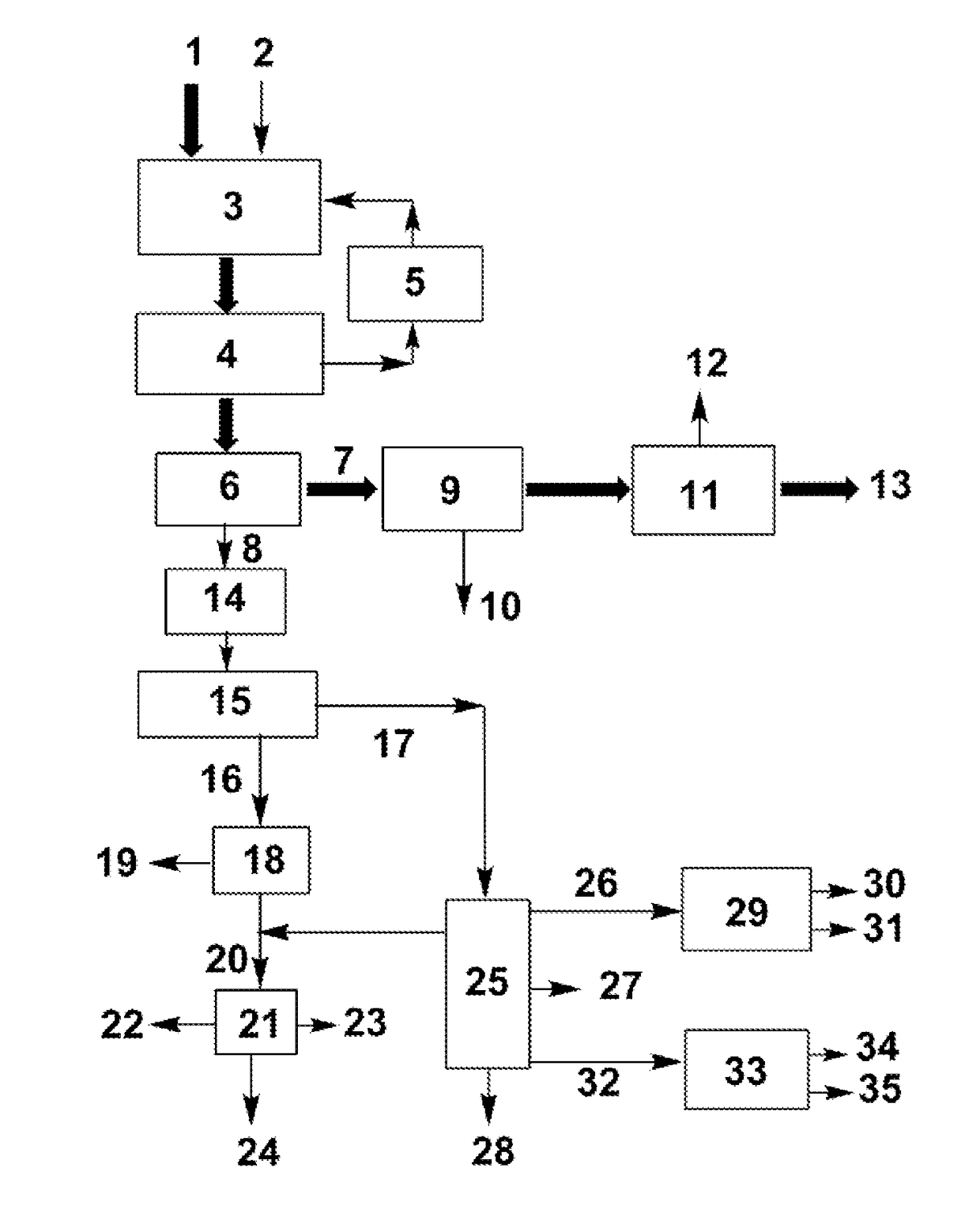Method for separation of close-boiling mixture of polyols
a polyol and mixture technology, applied in the direction of vacuum distillation separation, separation process, sustainable manufacturing/processing, etc., can solve the problems of low energy consumption, cost, etc., and achieve low waste discharge amount, energy consumption, and low waste discharge amount of the process. , to achieve the effect of easy separation of value-added acetals
- Summary
- Abstract
- Description
- Claims
- Application Information
AI Technical Summary
Benefits of technology
Problems solved by technology
Method used
Image
Examples
embodiments
[0046]The present invention is described in detail with the FIGURE and the following examples:
example 1
[0047](a) Dehydration reaction: 100 mL of crude ethylene glycol (73 wt % ethylene glycol, 17 wt % 1,2-propanediol, and 10 wt % 1,2-butanediol) was added in a dehydration reactor. After the mixture was heated to 180° C., 2 g of 300-mesh HZSM-5 zeolite with a SiO2 / Al2O3ratio of 25 was added. With stirring, the volatile products generated from the dehydration of miscellaneous polyols were continuously evaporated for 4 h.
[0048](b) Separation of the catalyst: After the dehydration reaction, the zeolite was separated from the liquid product with a centrifuge at a speed of 6000 rpm.
[0049](c) Further purification via distillation: after the previous step, the liquid mixture in the reactor was separated via vacuum distillation at an overhead pressure of 10 kPa and bottom temperature of 135-150° C. ˜65 g of ethylene glycol product at a purity of >90 wt % was obtained via simple distillation, in which the content of 1,2-butanediol was <1 wt %. The residue at the bottom was used to produce anti...
example 2
[0057](a) Dehydration reaction: 100 mL of crude ethylene glycol (73 wt % ethylene glycol, 17 wt % 1,2-propanediol, and 10 wt % 1,2-butanediol) was added in a dehydration reactor. After the mixture was heated to 185° C., 5 g of 300-mesh Hβ zeolite with aSiO2 / Al2O3ratio of 25 was added. With stirring, the volatile products generated from the dehydration of miscellaneous polyols were continuously evaporated for 4 h.
[0058](b) Separation of the catalyst: After the dehydration reaction, the zeolite was separated from the liquid product with a vacuum filter.
[0059](c) Purification via distillation: after the previous step, the liquid mixture in the reactor was separated via vacuum distillation at an overhead pressure of 10 kPa. ˜65 g of raw ethylene glycol product (b.p. 97.5 wt % was obtained via the vacuum distillation. The content of 1,2-butanediol was <0.5 wt % and the content of 1,2-propanediol was <2 wt % in the product. The residue at the bottom was used to produce antifreezes.
[0060](...
PUM
| Property | Measurement | Unit |
|---|---|---|
| temperature | aaaaa | aaaaa |
| boiling point | aaaaa | aaaaa |
| mass fraction | aaaaa | aaaaa |
Abstract
Description
Claims
Application Information
 Login to View More
Login to View More - R&D
- Intellectual Property
- Life Sciences
- Materials
- Tech Scout
- Unparalleled Data Quality
- Higher Quality Content
- 60% Fewer Hallucinations
Browse by: Latest US Patents, China's latest patents, Technical Efficacy Thesaurus, Application Domain, Technology Topic, Popular Technical Reports.
© 2025 PatSnap. All rights reserved.Legal|Privacy policy|Modern Slavery Act Transparency Statement|Sitemap|About US| Contact US: help@patsnap.com

